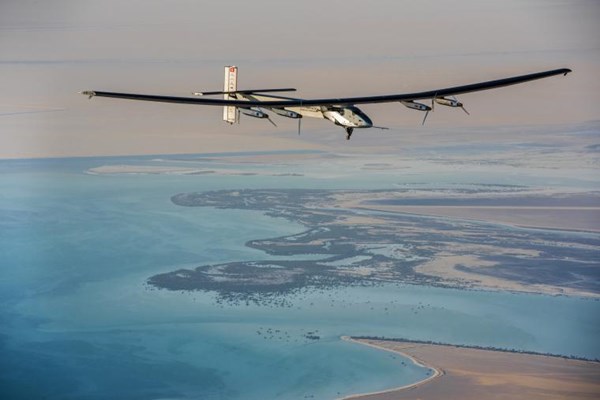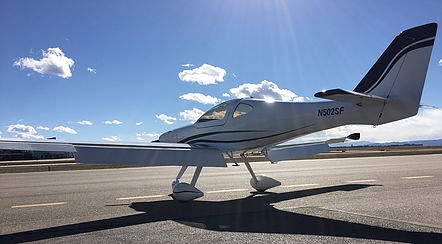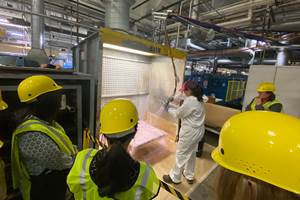Electric power for aircraft on the horizon
As a general aviation enthusiast and co-pilot — my husband and I fly a Mooney on occasion — I have been closely following the news about the Solar Impulse plane and the team’s historic round-the-world flight, on solar power alone.

Solar Impulse successfully completed its round-the-world flight this week.
As a general aviation enthusiast and co-pilot — my husband and I fly a Mooney on occasion — I have been closely following the news about the Solar Impulse plane and the team’s historic round-the-world flight, on solar power alone. In case you’ve missed this news, Bertrand Piccard and Andre Borschberg started an epic demonstration in Abu Dhabi back on March 9, 2015, and successfully completed 17 legs and 40,000 km in their solar-powered electric Solar Impulse 2 aircraft and returned to their starting point this week, on July 26. The trip took much longer than expected, because the 5-day crossing of the Pacific from Nagoya, Japan to Hawaii caused damage to the aircraft’s batteries, necessitating a long 9-month layover in Honolulu for repairs. The aircraft of course employs composite materials, as CW has pointed out in some past articles, including this one: http://www.compositesworld.com/articles/solar-impulse-2-pulse-on-the-future. CW’s Heather Caliendo was on hand when the plane landed in Phoenix, during its North American legs: http://www.compositesworld.com/blog/post/up-close-and-personal-with-solar-impulse-2.
Piccard and Borschberg’s achievement coincides with several items I’ve noticed over the past couple of days. First, this week marks the Experimental Aviation Assn.’s (EAA) AirVenture air show in Oshkosh, WI, US, often the setting for news and trends. Airbus is there exhibiting its E-Fan aircraft for the first time in the US. The E-Fan was first introduced at Farnborough Air Show in 2014, and the all-electric plane crossed the English Channel in 2015. The version in Wisconsin this week is E-Fan version 1.2, which incorporates a hybrid electric/gasoline engine on display for the first time. Airbus has teamed with Siemens to develop this hybrid concept and eventually scale it up for viable commercial application. According to a Siemens press release, the CEOs of both companies, Tom Enders and Joe Kaeser, endorse a major joint project towards the electrification of aviation with the goal of demonstrating the technical feasibility of various hybrid/electric propulsion systems by 2020. A team of around 200 employees will be working on this project to develop electrically-powered aircraft. This strikes me as pretty big news.

AEAC's Sun Flyer is on display this week at the Oshkosh air show.
And they’re not the only ones developing electric power for aircraft. As just one example, a company here in Colorado unveiled two months ago the Sun Flyer, and it’s also on display this week at Oshkosh. Developed by Aero Electric Aircraft Corp. (AEAC) headed by well-known engineer pilot George Bye, the Sun Flyer is targeted to training schools and bringing down the cost of flying — the cost of a gallon of leaded fuel for conventional aircraft like our Mooney is currently priced at about $5 per gallon, which adds to the steep price of flight training and, some say, the dearth of student pilots. Bye claims that energy cost for an hour in his aircraft could be as little as $1. That could really change the general aviation landscape.
Then, the US Environmental Protection Agency (EPA) announced Monday that it will impose emissions limits on US commercial aircraft, along the lines of a United Nations recommendation announced in February for international flights. Those limits require a 4% reduction in fuel consumption during cruise, beginning in 2020. And Europe’s Clean Sky public/private partnership program has been looking for years at breakthrough technology to reduce aircraft emissions.
It seems to me that all of this is pointing toward a shift in aviation, mirroring what has happened in the automotive sector: Planes, like cars, are being pulled into a new realm of lighter weight materials and alternative, even renewable, power sources, to meet increasingly more stringent emission targets. Composites, of course, have a place in this new scheme, so it’s a trend that may ultimately benefit our industry. And it would certainly make a ride in our airplane a lot quieter…
Related Content
NASA names university teams for aeronautics research challenges
As part of the agency’s University Leadership Initiative, three multidisciplinary teams will address topics related to growth in AAM, while a fourth examines electricity generation for future airliners.
Read MoreAMRC Training Centre introduces composites apprenticeship opportunity
With partners McLaren and Teledyne CML Composites, the Training Center will train new composites technicians in South Yorkshire to build up the future industry workforce.
Read MoreBelzona opens fifth European SuperWrap Training Centre
Global training facilities provide intensive, first-class installer and supervisor training for proper use and application of Belzona composite pipe and tank repair systems.
Read MoreWomen in the Composites Industry brings together women for networking, educational opportunities
Aiming to support the growth of women in this industry, the WCI industry group and its partners recently held its first live training event hosted by Owens Corning.
Read MoreRead Next
Developing bonded composite repair for ships, offshore units
Bureau Veritas and industry partners issue guidelines and pave the way for certification via StrengthBond Offshore project.
Read MorePlant tour: Daher Shap’in TechCenter and composites production plant, Saint-Aignan-de-Grandlieu, France
Co-located R&D and production advance OOA thermosets, thermoplastics, welding, recycling and digital technologies for faster processing and certification of lighter, more sustainable composites.
Read More“Structured air” TPS safeguards composite structures
Powered by an 85% air/15% pure polyimide aerogel, Blueshift’s novel material system protects structures during transient thermal events from -200°C to beyond 2400°C for rockets, battery boxes and more.
Read More






















